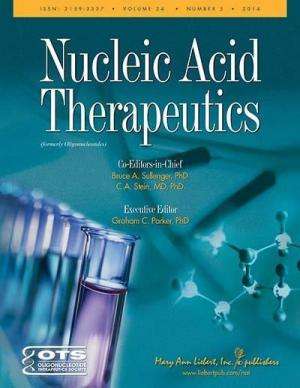Modified DNA backbone enables success of existing and novel oligonucleotide therapeutics

The two U.S. FDA approved oligonucleotide-based drugs on the market both have a modified chemical backbone made of phosphorothioates. The therapeutic advantages of the phosphorothioate group and the new types of gene expression-regulation oligonucleotide drugs that it is enabling are detailed in a Review article in Nucleic Acid Therapeutics.
In the article "Phosphorothioates, Essential Components of Therapeutic Oligonucleotides," Fritz Eckstein, Max-Planck-Institut für Experimentelle Medizin, Göttingen, Germany, describes how the chemical and biochemical properties of this significant nucleic acid modification have made DNA suitable for use as therapeutic agents. Initial applications focused on cleaving the mRNA product of genes to block protein production. Dr. Eckstein explores novel applications including microRNA and long non-coding RNA targets and the use of decoy oligonucleotides.
"We will advance the field of nucleic acid therapeutics by looking to key opinion leaders to educate and initiate the experienced and newcomers alike. In this review, Dr. Eckstein has produced a tour de force concerning the therapeutic application of phosphorothioates," says Executive Editor Graham C. Parker, PhD, The Carman and Ann Adams Department of Pediatrics, Wayne State University School of Medicine, Children's Hospital of Michigan, Detroit, MI.
More information: The article is available free on the Nucleic Acid Therapeutics website until December 13, 2014.


















